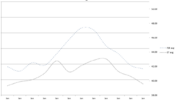ST Gui
240Robert
I doubt that this would have any significant effect on fuel consumption.
If someone is pursuing (npi) better gas mileage I think it's a mistake not do anything and everything that does give some measure of improved mileage no matter how small. It's a given that synced throttle bodies won't improve mileage as much as jodog's considerable suggestions but most won't want to roll that way. Well maybe except ditching the pillion. Doing all the little things to improve engine and rolling efficiency adds up.
And WOT can make any or all of them irrelevant.
Whether or not Tyson's comment is appropriate however accurate I'm still a fan of his. I was just discussing another of his quotes with someone:
That’s the good thing about science: It’s true whether or not you believe in it.



